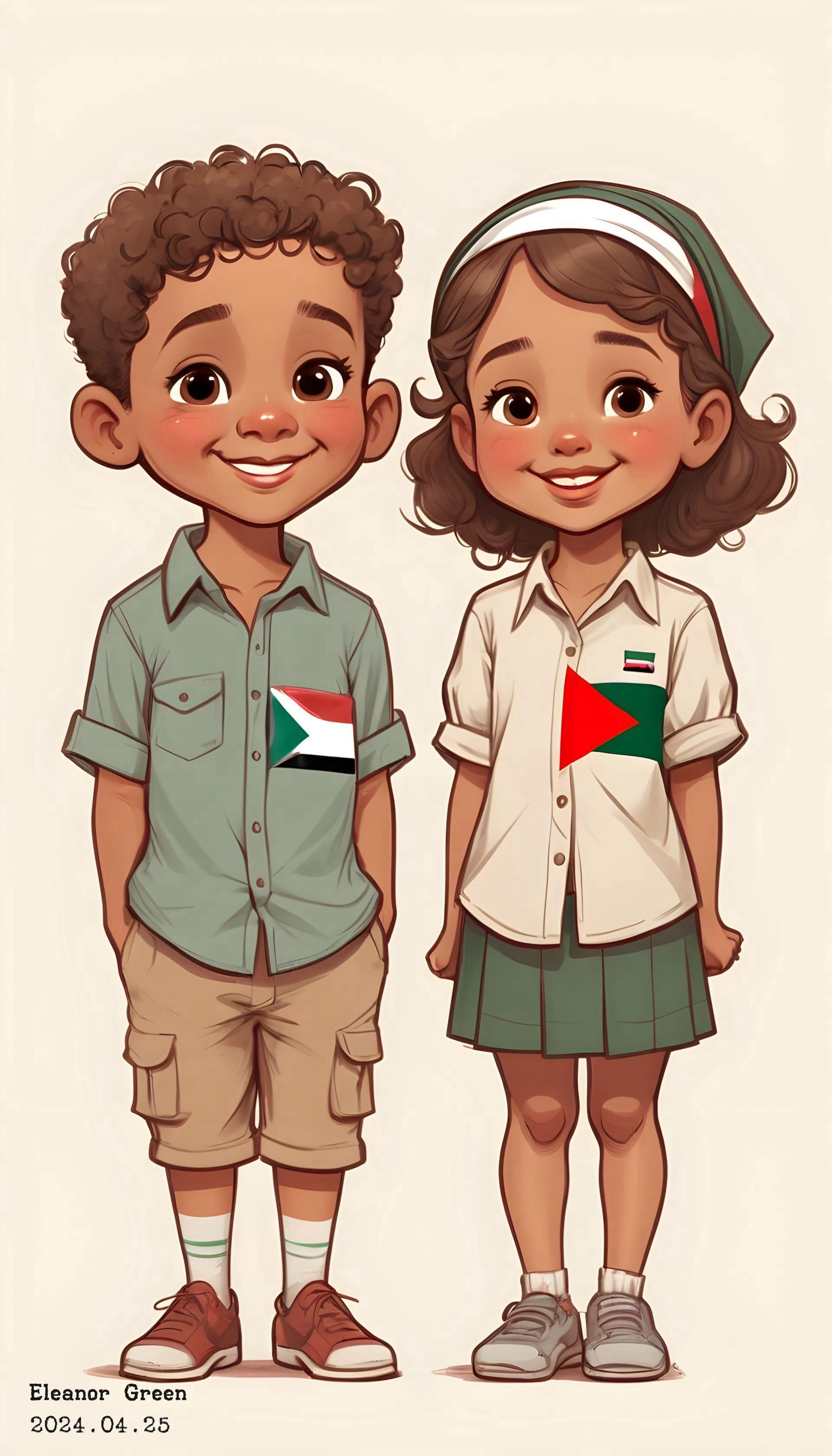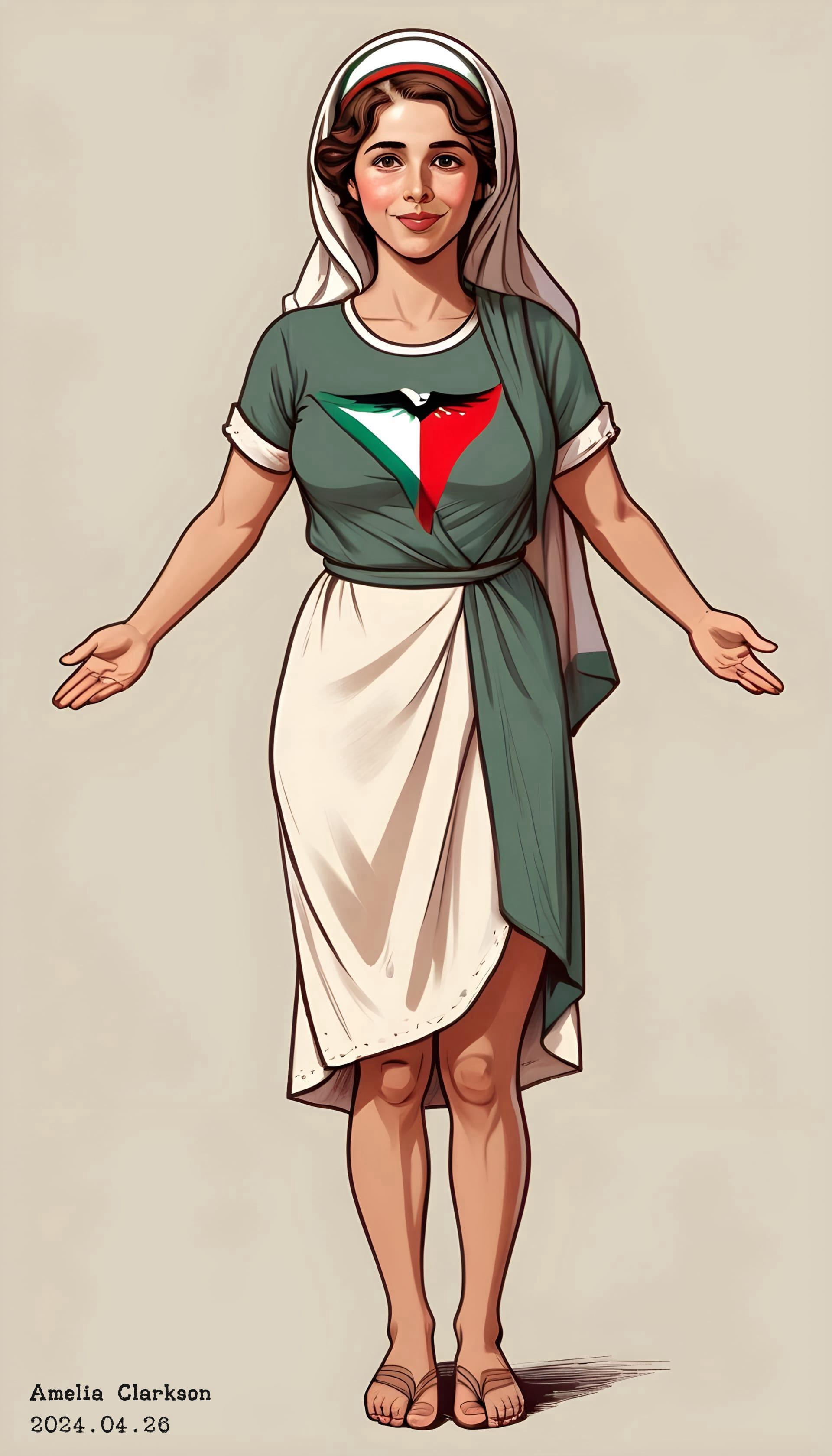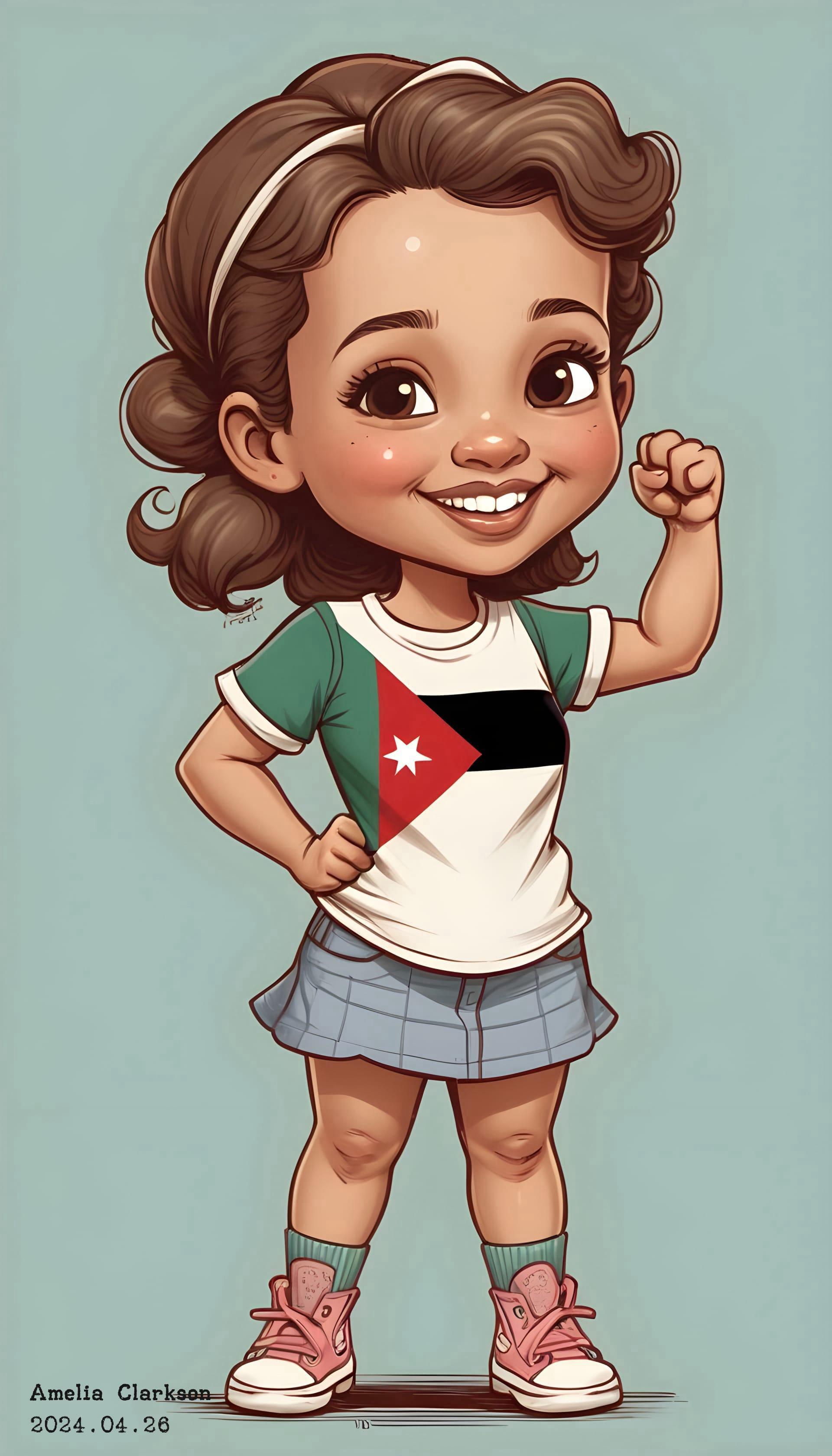Palestine Flag
- caricature /
- Palestine Flag

The origins of the name "Palestine" trace back to the ancient Greeks, who called the area "Philistia" after the Philistines, known for their encounters with Biblical figures.

Jerusalem, a city within modern-day Palestine, has been a focal point of various cultures and religions, including Judaism, Christianity, and Islam, each claiming historical and spiritual ties to the city.

The Palestine flag, consisting of black, white, green, and red stripes, was first adopted by the Arab Higher Committee in 1939 as a symbol of Arab nationalism in response to British colonial rule.

During the late 19th century, Palestine became a target for Zionist immigration and settlement, leading to increased tensions between Jewish immigrants and the Arab population.

In 1947, the United Nations proposed a plan to partition Palestine into Arab and Jewish states, a plan accepted by Jewish leaders but rejected by Arab leaders.

The city of Bethlehem, located in Palestine, is revered as the birthplace of Jesus Christ, making it a major pilgrimage site for Christians around the world.

In 1964, the Palestine Liberation Organization (PLO) was founded with the aim to create an independent state for Palestinians.

The iconic olive tree holds great significance in Palestinian culture, symbolizing peace and resilience amidst ongoing conflict.

During the Six-Day War in 1967, Israel captured the West Bank and Gaza Strip, significantly altering the map of Palestine.

Palestinian embroidery, known for its vibrant patterns and colors, is a rich tradition that women in the region have passed down through generations.

The Dead Sea, bordering the West Bank, is the lowest point on the earth’s surface and a significant site for both natural beauty and historical lore.

The first Intifada, a Palestinian uprising against Israeli occupation, began in 1987 and was marked by widespread protests and violence.

The Oslo Accords, signed in 1993, were a landmark moment in Palestinian history, creating a framework for future negotiations and establishing the Palestinian Authority.

The Palestine flag is often raised during international events to represent the Palestinian people, highlighting their ongoing quest for recognition and statehood.

In the early 20th century, the city of Jaffa was known as the "orange capital" of the world, with its citrus exports being a major part of the Palestinian economy.

Hummus, a dish now popular worldwide, has its roots in Middle Eastern cuisine, with Palestine being one of the regions claiming its origin.

Education holds a place of high importance in Palestinian society, with literacy rates being among the highest in the Middle East.

Music and dance, such as dabke, play a central role in Palestinian cultural celebrations and social gatherings.

The annual olive harvest is not just an agricultural activity but also a time of community bonding and cultural reaffirmation in Palestine.

The influence of the Palestine flag in international solidarity movements shows the global resonance of the Palestinian struggle for sovereignty and peace.